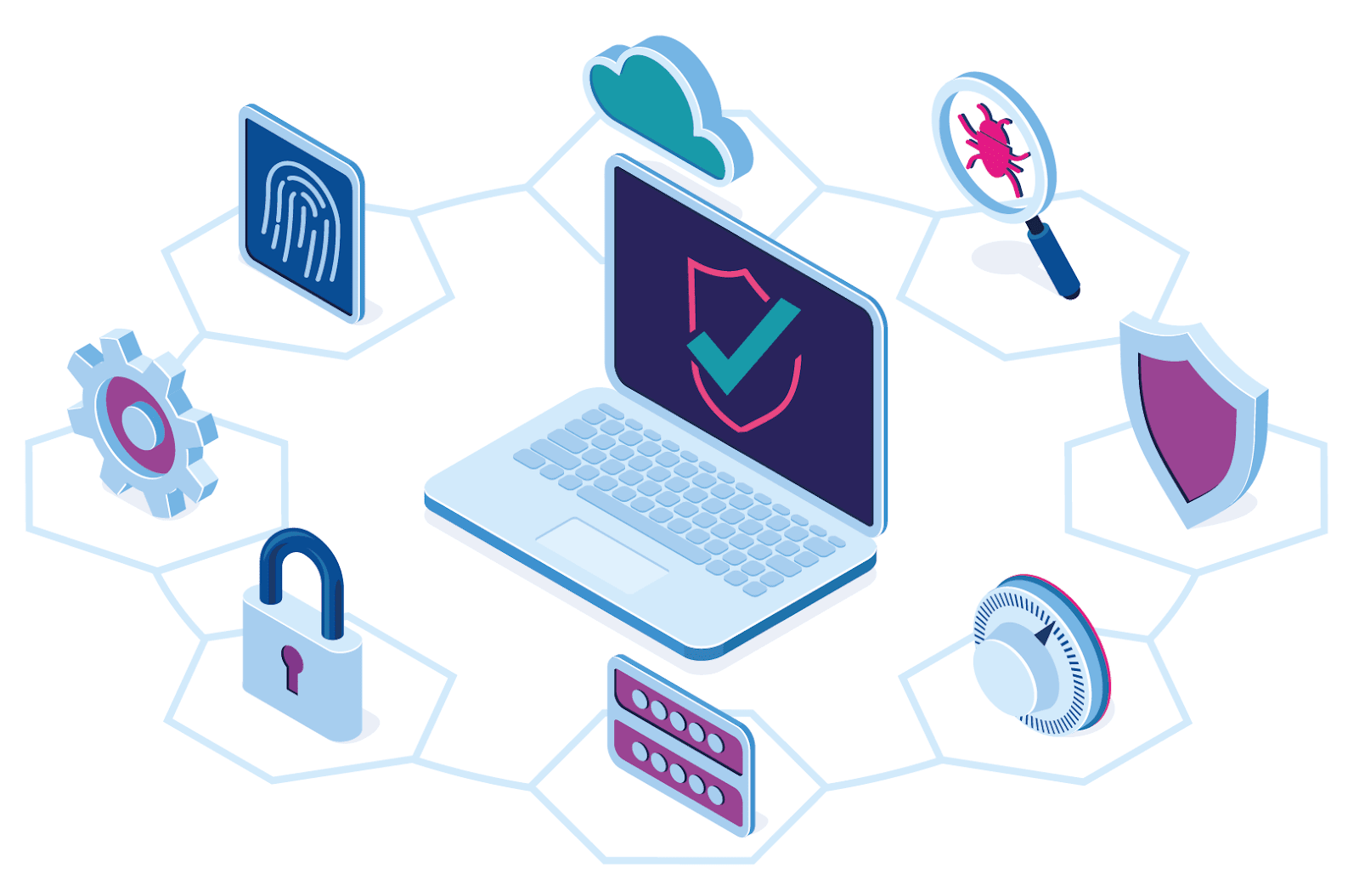A pen test, also known as a penetration test, simulates an authorized cyberattack against a device system to identify vulnerabilities that could influence it.
It focuses on identifying security flaws in a specific information system without jeopardizing the system itself.
Penetration testing services provide strategies and approaches for identifying system flaws that could endanger a business.
Pen testers in your software testing company can determine whether a system is vulnerable to attacks. So, what programming skills are required for pen testers to perform penetration testing?
This post discusses a pen tester’s programming skills and other factors.
Table of Contents
Pen Tester’s Programming Skills
Many cyber professionals worldwide believe learning to code is not required to find bugs in web applications and that an entry-level cybercrime hacker is sufficient to perform penetration tests.
Although this is true in some cases, hacking and penetration testing necessitate extensive programming knowledge.
A pen tester must have programming skills to succeed in this career. Let’s dig a little deeper into each programming skill that a pen tester should have.
Knowledge of Computer Protocols
A pen tester should know OSI (Open System Interconnection) models and computer protocols. It includes protocol links, network, transport, and application layers.
A penetration tester should understand how protocols operate by becoming familiar with standard network protocols and being able to tell which ones are secure.
Additionally, testers need to know topology maps covering network diagrams and conceptual frameworks.
Scripting or Coding Skills
When conducting an assessment, penetration testers are skilled in coding or scripting. A pen tester needs at least a basic understanding of coding languages like Perl, PowerShell, etc., to modify data in any format.
Knowledge of Weaknesses and Exploits
Beyond tool sets, a pen test can identify security vulnerabilities. Effective pen testers must be able to modify existing exploits so they can use them to test specific networks.
Understand the Different Components of Networks
Pen testers must be familiar with various types of hardware, software, a typical business network, security precautions, etc.
Also, they must know the configuration of NACs and the leading network solution manufacturers. It provides a better understanding of the unique systems, flaws, and potential exploits.
READ ALSO: How To Get Started With Software Test Automation
Profundity in Security Technologies and Web Communications
A tester can configure secure sockets layer (SSL) certificates for a domain and map and register a web domain. Furthermore, a pent tester understands how to identify input fields and collect data by manipulating a web application’s features.

Types Of Pen Testing
A thorough approach to penetration testing is essential for effective risk management. It covers all areas of testing in the environment.
- Network
- Web Application
- Cloud
- Mobile Application and Devices
- Containers
- CI/CD Pipeline
- Embedded Devices
- APIs
READ ALSO: What You Need To Know About Android Application Security
Network Test
This pen testing identifies the norm and the most critical external security flaws. The checklist for penetration testers contains test scenarios for encrypted protocol, SSL certificate scope issues, and more.
Web application tests
Checkers investigate how security protocols work and identify flaws, attack structures, and other security holes that can jeopardize web applications.
Cloud Penetration Test
The institution using the environment and the cloud software provider are both responsible for cloud security. Examining various aspects of the cloud, such as APIs, databases, encryption, security controls, and so on, necessitates a specialized set of skills and experience.
Mobile Apps and Devices
Automated and manual testing involves penetration testing in mobile apps and devices. In mobile applications, testers search for vulnerabilities like session management and the correlating server-side features.
Docker Containers Pen Test
Docker containers frequently have flaws that can exploit widely. Misconfiguration is another common risk associated with containers and other components.
CI/CD pipeline Penetration Tests
The CI/CD pipeline can incorporate automated pen testing tools to simulate what a hacker might do to undermine the security of an app. Static code scanning misses hidden vulnerabilities and attack patterns, but automated CI/CD pen testing can find them.
The Embedded Devices Test
Devices embedded or part of the Internet of Things (IoT), such as medical equipment, home appliances, watches, and others, have special software testing needs. To find the most critical flaws in the appropriate use case, experts conduct a thorough communication test and a server-based analysis.
APIs
Both automated and manual testing methods validate the API Security. Security risks that testers look for include user authentication, a shortage of resources, and other issues.
READ ALSO: Test Automation: Features, Benefits, And Challenges Of Automated Testing
Programming Skills for Pen Testers: FAQs
Penetration testers, or pen testers for short, are cybersecurity professionals who identify vulnerabilities in systems through simulated attacks. Programming skills are a vital asset in their arsenal.
Here are five frequently asked questions to clarify which programming languages pen testers should focus on:
Why are programming skills important for pen testers?
Pen testers often need to develop custom tools and scripts to automate tasks, analyze data, and exploit vulnerabilities. Understanding programming logic and syntax allows them to interact with systems on a deeper level.
Which programming languages are most useful for pen testers?
Several languages are valuable for pen testers, but some reign supreme:
- Python: A popular and versatile language, Python is known for its readability and extensive libraries for security testing tasks like web scraping, network automation, and vulnerability scanning.
- Bash/Shell Scripting: Understanding basic shell scripting allows pen testers to automate repetitive tasks on Linux and Unix-based systems, which are commonly used in servers and network devices.
- SQL: Many attacks target databases, so proficiency in SQL (Structured Query Language) is essential for pen testers to interact with databases, extract data, and identify potential security weaknesses.
READ ALSO: Protecting Your Website Against Cross-Site Scripting (XSS) Attacks
Are there any other programming languages beneficial for pen testers?
Absolutely! Here are some additional languages that can be helpful:
- JavaScript: Many web-based attacks involve exploiting vulnerabilities in web applications. Familiarity with JavaScript helps pen testers understand client-side scripting and potential injection flaws.
- C/C++: While not essential for everyday tasks, understanding C/C++ can be advantageous for analyzing low-level system vulnerabilities or developing custom exploits for specific situations.
How can I improve my programming skills for pen testing?
There are many resources available online and offline to learn programming languages relevant to pen test. Here are a few ideas:
- Online courses and tutorials: Many platforms offer beginner-friendly to advanced courses on Python, Bash scripting, SQL, and other languages.
- Pen testing communities: Online forums and communities for pen testers often share resources, tutorials, and practice challenges to hone your programming skills in a practical context.
- Books and reference guides: Classic books and online references provide in-depth knowledge of specific programming languages and their applications in pen testing.
Do I need to be a master programmer to become a pen tester?
While strong programming skills are a plus, a well-rounded understanding of cybersecurity principles and methodologies is equally important. Focus on core pen testing techniques and prioritize languages like Python and Bash Scripting to get started in the field. You can always expand your programming knowledge as you progress in your pen testing career.
Conclusion
Programming will be a crucial skill for the future of innovations. A specialist pen tester should, therefore, receive training and possess sufficient programming skills.
Penetration testing is essential to find your products’ weaknesses before hackers do.
INTERESTING POSTS
- How To Be The Number One Hacker In The World
- How To Lock And Unlock Your Windows PC With A Pendrive (Like A Pro!)
- Israeli Cyber Experts Discover Security Flaws in DLSR
- 5 Do’s and Don’ts For Using USB Flash Drives
- 4 Cybersecurity Best Practices To Prevent Cyber Attacks
About the Author:
Chandra Palan is an Indian-born content writer, currently based in Australia with her husband and two kids. She is a passionate writer and has been writing for the past decade, covering topics ranging from technology, cybersecurity, data privacy and more. She currently works as a content writer for SecureBlitz.com, covering the latest cyber threats and trends. With her in-depth knowledge of the industry, she strives to deliver accurate and helpful advice to her readers.







